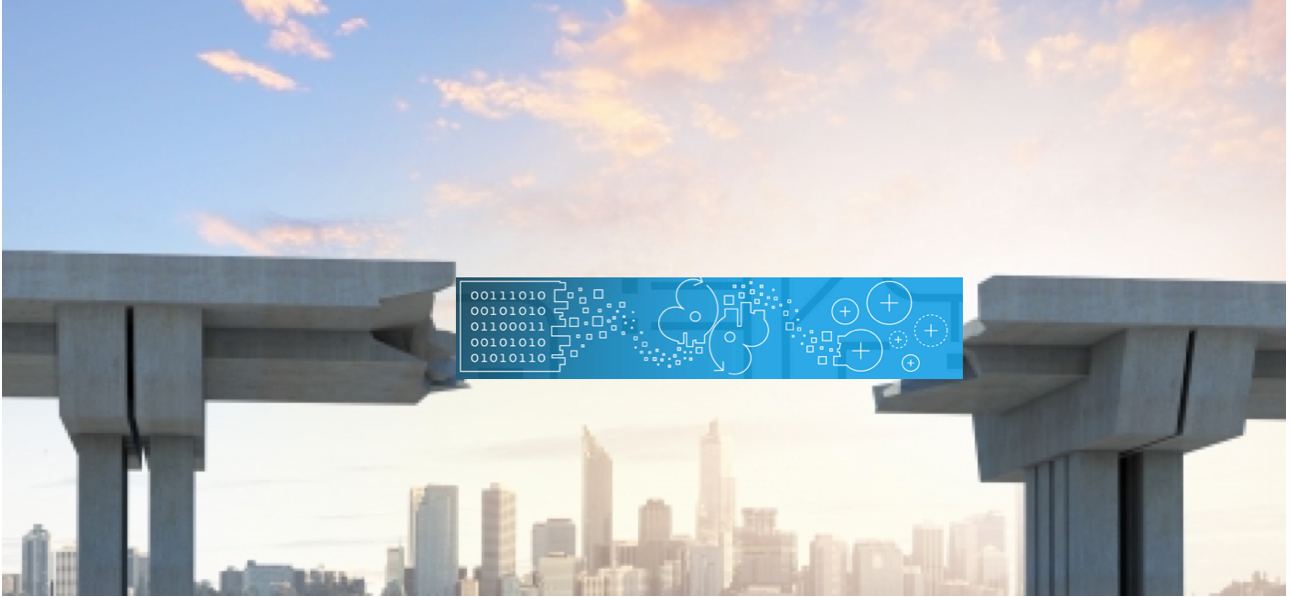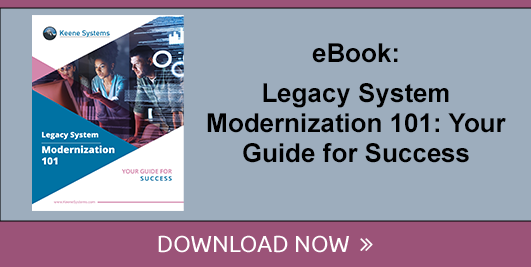Smart Legacy Business Application Modernization Techniques to Know
4 min read
Topic:
Legacy System Modernization
In the vast majority of all situations, legacy applications aren't just difficult to maintain for businesses - oftentimes they're literally impossible to manage over the long-term.
So much of this has to do with the fact that they're built using software and other technology that is either no longer supported, or that doesn't enable web access simply because it was never meant to. As a result, it always becomes a need for enterprises to redevelop those legacy applications using modern software technologies that support the web, with ASP.NET being a prime example.
Overall, the benefits of replacing legacy systems include not only offering employees a tool that is able to meet their demands, but one that you can also continue to support for maximum flexibility in the future. You'll also save a lot of money compared to the cost of keeping that older application functional, to say nothing of the security benefits you'll get to enjoy as well.
But at the same time, this demands the question - exactly how should you convert that legacy business application into the modern web platform that you need? Thankfully, the solution is clear: you need to duplicate the functionality by documenting the old application, using it as a foundation for creating something new built on the latest that modern technology has to offer.
Getting to this point isn't necessarily difficult, to be fair - the benefits of replacing legacy systems always outweigh the amount of work required. But it is a very precise process and for the best results, there are a number of best practices you'll want to lean into.

The Building Blocks of Better Legacy System Modernization Strategies: Breaking Things Down
By far, the most important thing for you to do as you work through the process of defining and implementing a modern version of a legacy application involves stating the goals of the project at the outset.
Oftentimes many businesses who still rely on these legacy applications know full well that there are gaps in their current capabilities. Therefore, it is critical to understand the goals that you're trying to accomplish - both in terms of the functionality that you need to duplicate and also the gaps that need to be closed via this opportunity.
Along the same lines, you'll also want to identify all of the key stakeholders in the project and outline what roles they will play. This step is equally important because it highlights the users of the software and what they will actually need to accomplish with it on a daily basis.
At that point, you'll be able to identify the processes and data flow for each role that you outlined above. Really, what you're doing is trying to come to a better understanding of the way data needs to flow throughout your organization. This is invaluable because often businesses are aware that there are opportunities to improve processes to make sure that data is accurate, but they're unsure where to begin. This gives you a chance to not only better understand this overarching idea, but to also simplify the necessary steps to complete a task whenever possible.
Then, you'll need to identify the specific data that needs to be captured during the legacy application modernization process - otherwise known as database design. By now, you already understand the actors, their processes and the required data flow. Here, you'll be taking a look at the details that are needed to actually store that data, along with the relationships between different types of data, that are all needed to implement the process. This is also a big part of what will allow you to support the status of the information throughout the process as well.
Additional Considerations About Your Legacy System Replacement Strategy
Once you've successfully handled everything outlined above, you'll have the foundation of the application properly defined. With that knowledge of the users, you can then develop a series of mockup screens to implement the process flow. In essence, what you're doing is taking all of the work you've already done and visualizing it - making sure that it works just as well in real life as it did during conception.
Next, you'll be able to identify all integration points and build the integration itself. If you have an accounting department employee who needs to get data out of this new system and into QuickBooks automatically, for example, this is the point of the process that will make that integration possible. You need to identify all other systems that your new application will need to communicate with, at which point you can develop and test the integration on a case-by-case basis.
Speaking of integration, you'll also need to write what is called a "test plan" - which is exactly what it sounds like. Testing is always an essential part of the application development process, as you need to know beyond the shadow of a doubt that the system is working properly. Typically, this will be completed by a system architect along with a quality assurance team. These are the people who understand the functionality of the application, but who did not write it themselves. Therefore, everything can be tested with absolutely no development bias to speak of - leading to far more accurate and objective results.
Next, you'll be able to identify the "Go Live" issues that exist - and rest assured, they always do. "Go Live" issues are useful to get all of your users trained on the new system. It may be rolled out to some users at first but not all of them, for example. You could even be selective about which functionality you roll out and which you hold back. The timing of all this is critical because if you're shutting down an old system to make way for the new one, everything has to be running before the old system is fully turned off. This "Go Live" plan should always be mapped out well in advance, since there could easily be development considerations to enable the old and new applications to run simultaneously for a period of time.
Finally, and arguably most importantly, you'll need to develop using a true agile methodology. This development approach is pivotal because, unlike the traditional waterfall process of development where you define all of the functionality up front before any work is actually completed, agile allows the project to be broken down into a series of smaller and more manageable chunks.
Each of those chunks will go through its respective development steps recursively of design, development, test and rework, until the function itself is completed. Overall, agile development is a true benefit to your company because as you see the progress being made, you can continue to identify optimizations that could not have been known at the start of the project. This is a great way to capitalize on opportunities, rather than watching them pass you by.
In the end, this nine-step process is always preferred during legacy application modernization because it accounts for ALL of the elements in play during your typical software development project. Plus, it goes a long way towards guaranteeing that information, processes and even your data are all accounted for while enabling the best flexibility and the highest end result possible - which really are the most important benefits of all.
To learn more about Legacy Business Application Modernization Techniques, download our eBook titled "Legacy System Modernization 101 - Your Guide for Success.


